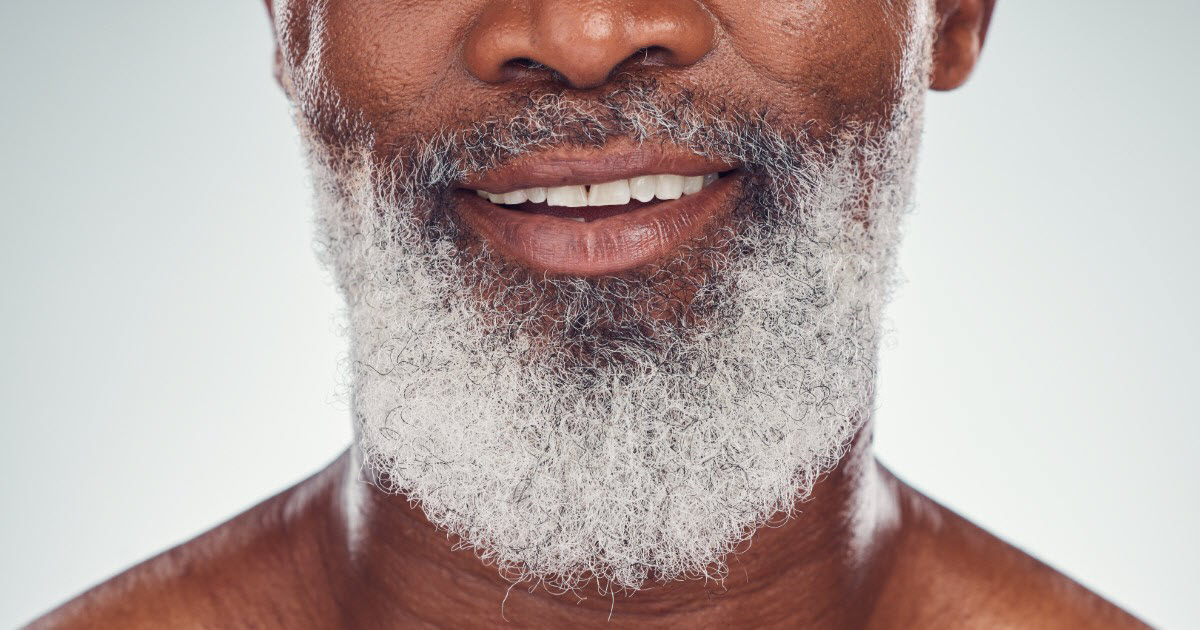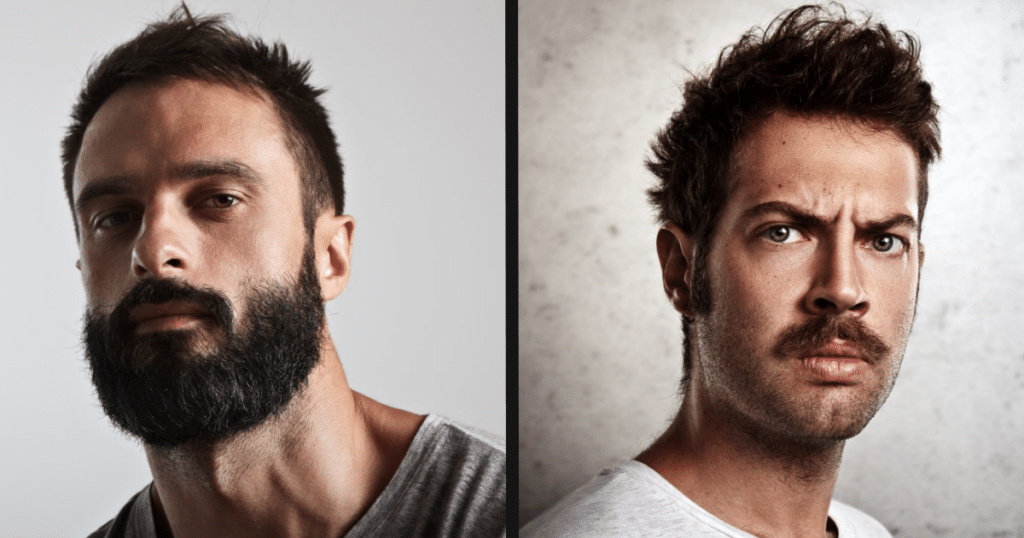If you’re like lots of guys trying to grow a beard, you’ve probably wondered: does facial hair stop growing? Maybe you’ve been letting your facial grow for weeks or months and you’re just not getting the same kind of growth your friends have had over the same period. Today, we’re going to talk about whether facial hair stops growing, and we’ll go over the potential reasons you’re not getting the growth you want. Let’s find out the answer to the question: does facial hair stop growing?
For most men, it’s not that your beard as a whole will stop growing. Instead, it’s the individual hairs that stop growing, either for health or hygiene reasons, or (for healthy beard hairs) when they achieve their terminal length.
When each hair eventually gets to its terminal length, it falls out. At that point, a new hair will begin to grow in.
In today’s article, we’re going to reveal everything you need to know about how and when your facial hair grows. You’ll learn the reasons you’re not getting the growth that you’re hoping for too, as well as things you can do to make your beard grow as fast and thick as possible.
What is Your Beard’s Terminal Length?
As I mentioned before, your beard’s terminal length is actually the terminal length of the individual hairs. When each hair reaches its terminal length, it falls out and a new hair starts to grow in.
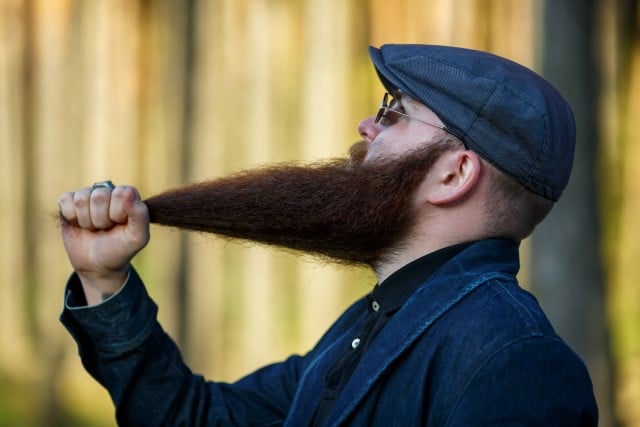
Facial hair terminal length varies from man to man. Also, facial hairs in the mustache area have shorter terminal lengths than hair in the beard area.
Your DNA plays a large part in the terminal length of your hairs.
A phase called the Anagen phase is when a hair continues to grow and stays healthy. Here’s where your genes kick in.
Your genetic inheritance determines how long your Anagen phase lasts. It may be as short as 2 years or extend up to 5 years.
The longer your Anagen phase, the longer each facial hair can grow.
After the hair’s Anagen phase comes the Catagen phase. This phase lasts between 2 and 3 weeks, and this is when the follicle of each hair shrinks. As a result, the hair stops growing.
Finally, the Telogen phase is when the follicle shrinks so much that the hair falls out. After about 3 weeks, a new hair should start its Anagen phase.
Myths About Facial Hair Growth
Before I reveal what you need to know about facial hair growth (and why it can stop), let’s dispel some of the most popular myths on the topic.
Myth 1: Shaving Makes Your Facial Hair Grow More
This is the most popular misconception about facial hair. Guys end up thinking about shaving makes their facial hair grow in more thickly simply because when you shave, you create a blunt tip for the hairs.
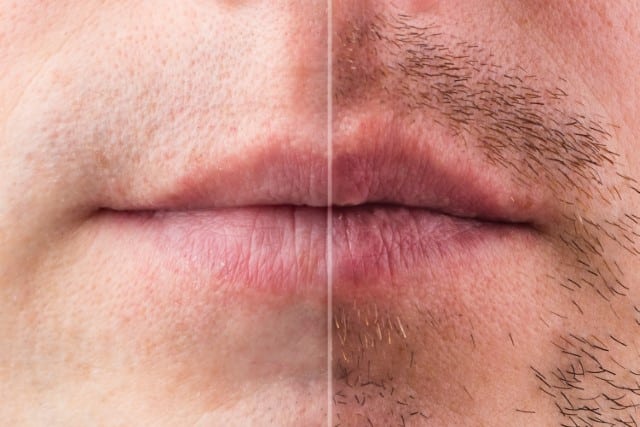
When hair has a blunt tip, it appears thicker, and this may make you think that it is growing in more abundantly. But this is just an illusion.
Myth 2: You Can Encourage Growth With Oils
While the right kind of oil will help make your facial hair healthier and more attractive, it won’t directly make it grow. It will probably help to cut down on dryness and breakage, however, which will help make your beard thicker.
Myth 3: All the Parts of Your Beard Should Grow at the Same Pace
Don’t expect every part of your facial hair to grow at the same rate. You will see that the hair on different parts of your face will grow at their own individual rates. In most men, the hair on their chins grow in more quickly than the hair on their cheeks.
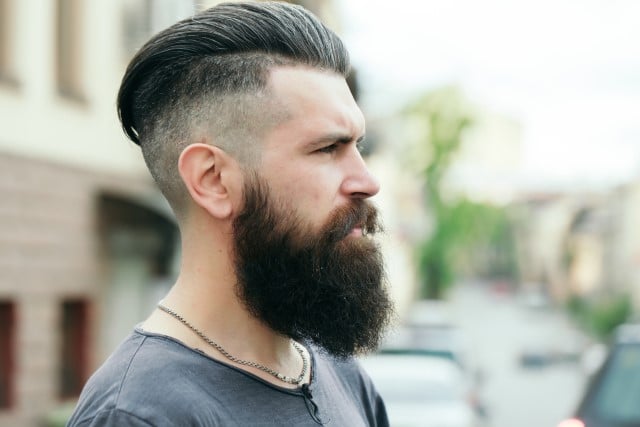
Now that we’ve got those myths out of the way, let’s talk about the factors that affect facial hair growth.
What Factors Affect Your Facial Hair Growth?
There are several different factors that impact the growth of hair on your face. Keep scrolling to learn about them here.
Your Genes
Your genes play a part in how fast and thickly your facial hair grows. As we mentioned earlier, you inherit the length of your Anagen phase.
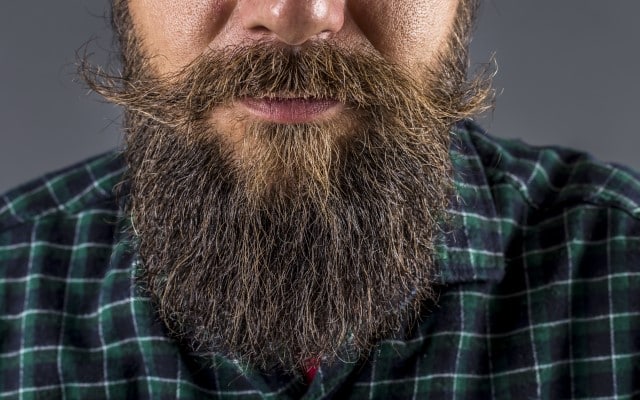
This is the phase when each hair is in active growth, and how long it will keep on growing until it eventually falls out (for a new hair to grow in).
Hormones
Specifically, testosterone is the hormone that controls how much facial hair growth you’ll get. If you suspect that you may have lower than average testosterone levels, ask your doctor to do a test. If they do find that you have low testosterone, they may be able to recommend certain supplements.
Remember, some men with normal testosterone levels have trouble growing a beard simply because of their genetics.
Aging
Your beard is usually thickest in your 20s, but this varies from guy to guy.
Once you get to 30 or so, your facial growth will slowly start declining. However, for some men, they may find that they have better facial hair in their 30s.
In fact, some men try to grow beards in their 20s only to find that they can’t get the full beard they desire until they’re older.
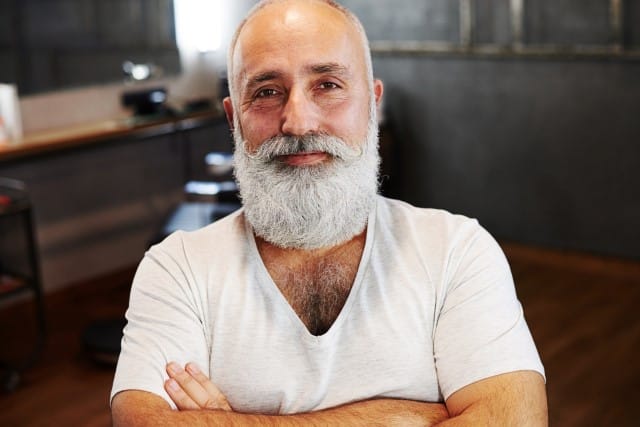
When aging starts negatively affecting beard growth, it’s because testosterone and DHT (dihydrotestosterone) production fall a little each year.
The exact timing of when your facial hair growth starts to decline may vary slightly between men based on their genetics.
Lifestyle
An unhealthy diet, not enough exercise, poor sleep, and stress can also affect your facial hair growth. Of course, hygiene also plays an important role.
Facial Hair Growth Cycle
If you’re hoping to grow a full beard, you can expect to do that within between 2 and 4 months. That is because daily facial hair growth usually ranges between 0.3 and 0.5 millimeters. So, each month, you’ll probably see up to half an inch of facial hair growth.
If you give up shaving because you want a beard, you will have to be patient as you get through several different growth cycle stages.

Healthline explains the stages that you’ll notice after you stop shaving to grow a beard. We’ll talk about them here.
Stage 1
You’ll be in stage 1 for around 7 days after you stop shaving. How much stubble you end up with when this stage finishes is a strong indication of your facial hair growth rate.
Stage 2
Stage 2 is for the 2 weeks after the first stage. It’s during this stage that you’ll get an idea if there are any problems with patchiness in your facial hair growth.
Stage 3
Stage 3 is also 2 weeks. If you have strong facial hair growth, you should have a pretty good beard. However, if you have weaker growth, this may be an indication that you’ll have trouble trying to grow a full beard.
Stage 4
By the time you reach stage 4, you’ll already be in the second month after stopping shaving. At this point, you’ll probably start thinking about getting your beard into a neater shape. You can get it trimmed at a barbershop.
Stage 5
Once you’ve reached your 2-month anniversary of beard-growing, your facial hair’s growth rate will probably slow down a bit. If you decide that you want to keep a full beard, you’ll have to commit to regular trimming and the right grooming over the long term.
Facial Hair Care for Optimal Growth
You need to take care of your facial hair and skin the right way if you want optimal growth. Here are some crucial parts of facial hair care.
Wash Your Face Daily
You have normal or dry skin, you should wash your face once a day. But if you have an oilier skin type, you should probably wash it twice daily.
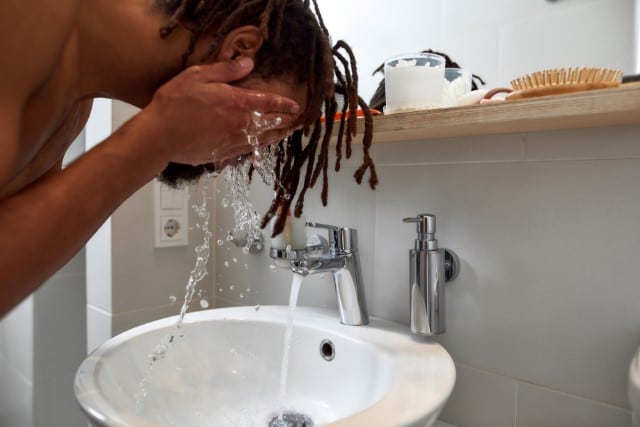
The American Academy of Dermatology Association explains that men should wash their facial skin and hair every day. It’s important that you use the right kind of cleanser, ensuring that it is non-comedogenic and doesn’t contain any artificial fragrances.
When you apply the cleanser, use circular motions and give your skin and facial hair a massage. Remember to do a thorough rinse and then use a clean towel to gently dry your face.
One of our favorite face washes is from the Bulldog brand. It’s the Bulldog Skincare Sensitive Face Wash. Whether or not you have sensitive skin, this fragrance-free product will thoroughly clean your face while replenishing it with omega-3 fatty acids and oat oils.
Exfoliate a Few Times a Week
It helps to occasionally exfoliate your face, including the skin under your facial hair. The best exfoliators are formulated to be gentle on sensitive skin. Look for one that contains salicylic acid.
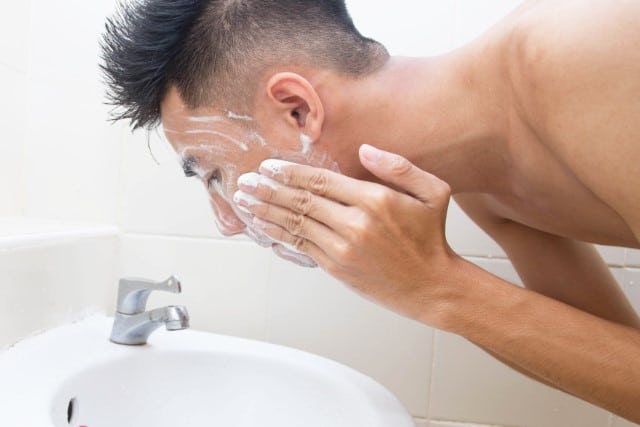
When it comes to the right product, Clinique for Men Face Scrub is a great choice. It features salicylic acid and it’s fragrance free.
Use a Moisturizer
It’s important to keep your skin and facial hair well-moisturized. Apply a moisturizer after you cleanse each day. It’s also important to use after you exfoliate.
We recommend Bulldog Original Moisturizer + Aloe Vera. It offers the perfect hydration for the skin under and around your facial hair after you shave. Plus, we like how it absorbs quickly and is non-greasy.
Shave the Right Way
One of the most important considerations when shaving is preventing irritation to your face. It’s best to shave after your shower each day, as that is when your skin will be supple and the hair softer than usual.
Make sure you use a shaving gel, cream, or even oil for shaving. Choose one that is fragrance free, so it’s less likely to cause irritation.
Comb Your Beard
If you have a mid-length to long beard, you should definitely have a beard comb on hand.
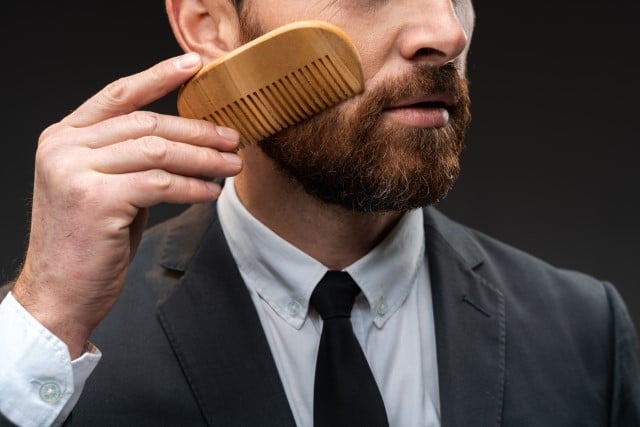
Comb your beard when it is wet – an essential part of proper beard care.
Avoid Touching Your Beard Too Often
Many men get in the bad habit of constantly touching their beards. Don’t do this, as you’ll end up with dirty, germy facial hair. This can eventually lead to skin problems and poor facial hair growth.
Other Things You Can Do to Improve Facial Hair Growth
Improving your diet, getting more exercise, and getting enough sleep may help your facial hair grow more thickly and stay healthy.
Here are some foods you can add to your diet that can help give you a better beard.
Eat More Zinc-Rich Foods
Getting more zinc in your diet may help improve your testosterone levels. For example, you could try eating zinc-rich foods, such as chickpeas and nuts.
Vitamin-Rich Fruits and Vegetables
Eating fruits and vegetables that are rich in vitamins (especially vitamin B) may help to make your facial hair healthier.

Vitamin A and C are also helpful, as are D and E.
Eat Liver
Liver isn’t exactly a popular dish, but it contains a lot of iron, and this can help with hair growth. If you don’t like liver, look for other foods that are iron-rich, such as spinach and red meat.
Get More Healthy Fats
Getting more healthy fats in your diet can also help boost facial hair growth. Eat foods such as avocado, nuts, and seeds.
Get in Shape
Getting more exercise can help your facial hair in two ways. First, it will help you achieve and maintain a healthy weight, and this plays a large part in optimizing your testosterone levels.
Second, exercise boosts blood flow all over your body, including your face. This blood flow is important for kicking your hair follicles into gear.
Now You Know How Your Beard Grows
So, if it seems like your facial hair has stopped growing, after reading this article you should have a pretty good idea of what might be going on.
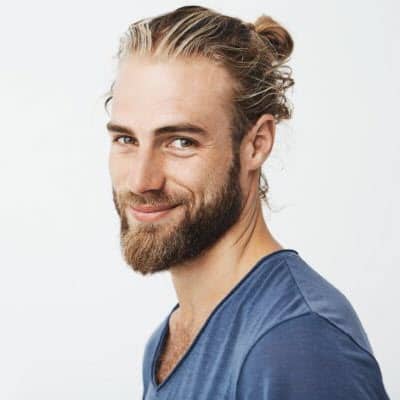
If you already have a (really) long beard that you’ve been growing for two years or more and just been trimming and shaping, and all of a sudden it has stopped growing, maybe you’ve reached your terminal beard length.
That means your beard hairs will only grow to the length you have achieved, and that may be all mother nature gave ya!
But as we’ve seen here, there are other possibilities.
It could be that you need to improve your diet, exercise more, and/or put together a better hygiene schedule.
Visit our Beard Care resource page to upgrade some key parts of your grooming routine and learn about some of the products we love to use on our beards.
Michael Morris is the head writer here at Rough and Tumble Gentleman. He's got a ducktail beard and loves Brazilian jiu-jitsu. He's married to the woman of his dreams and lives in Brooklyn, NY.

